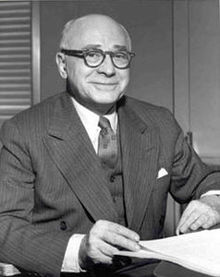Harry Benjamin (Harry Benjamin)

In 1948, in San Francisco, Harry Benjamin was asked by Alfred Kinsey, a fellow sexologist, to see a child who “wanted to become a girl” despite being born male; the mother wished for help that would assist rather than thwart the child. Kinsey had encountered the child as a result of his interviews for Sexual Behavior in the Human Male, which was published that year. Kinsey and Benjamin had seen nothing of the like previously. This child rapidly led Benjamin to understand that there was a different condition to that of transvestism, under which adults who had such needs had been classified to that time. Despite the psychiatrists with whom Harry Benjamin involved in the case not agreeing on a path of treatment, Benjamin eventually decided to treat the child with estrogen (Premarin, introduced in 1941), which had a “calming effect”, and helped arrange for the mother and child to go to Germany, where surgery to assist the child could be performed but, from there, they ceased to maintain contact, to Benjamin’s regret. However, Benjamin continued to refine his understanding and went on to treat several hundred patients with similar needs in a similar manner, often without accepting any payment. Many of his patients were referred by David Cauldwell, Robert Stoller, and doctors in Denmark. These doctors received hundreds of requests from individuals who had read about their work connected with changing sex, as it was then largely described.
However, due to the personal political opinions of the American doctors and a Danish law prohibiting sex reassignment surgery on noncitizens, these doctors referred the letter-writers to the one doctor of the era who would aid transsexual individuals, Harry Benjamin. Harry Benjamin conducted treatment with the assistance of carefully selected colleagues of various disciplines (such as psychiatrists C.L Ihlenfeld and John Alden, electrologist Martha Foss, and surgeons Jose Jesus Barbosa, Roberto C Granato, and Georges Burou). Benjamin’s patients regarded him as a man of immense caring, respect and kindness, and many kept in touch with him until his death. He was a prolific and assiduous correspondent, in both English and German, and many letters are archived at the Magnus Hirschfeld Archive for Sexology, Humboldt University, Berlin. The legal, social and medical background to this in the United States, as in many other countries, was often a stark contrast, since wearing items of clothing associated with the opposite sex in public was often illegal, castration of a male was often illegal, anything seen as homosexuality was often persecuted or illegal, and many doctors considered all such people (including children) at best denied any affirmation of their gender, or involuntarily subjected to treatments such as drugged detention, electroconvulsive therapy, or lobotomy. Though he had already published papers and lectured to professional audiences extensively, Benjamin’s 1966 book, The Transsexual Phenomenon, was immensely important as the first large work describing and explaining the affirmative treatment path he pioneered. Publicity surrounding his patient Christine Jorgensen brought the issue into the mainstream in 1952 and led to a great many people presenting for assistance, internationally. In the preface of Christine Jorgensen’s autobiography, Dr. Benjamin also gives Jorgensen credit for the advancement of his studies. He wrote, “Indeed Christine, without you, probably none of this would have happened; the grant, my publications, lectures, etc.” Similar cases in other countries (such as that of Roberta Cowell, whose surgery by Harold Gillies in England was in 1951 but was not publicised until 1954; Coccinelle who received much publicity in France in 1958, and April Ashley whose exposure in 1961 by the British tabloid press was reported worldwide) fuelled this. But most of Benjamin’s patients lived (and many still live) quiet lives. Reed Erickson (1917–1992), a successful industrialist, sought treatment from Benjamin in 1963. Erickson was the founder and funder of the Erickson Educational Foundation, which published educational booklets, funded medical conferences, counselling services, and the establishment of gender clinics. The EEF funded the Harry Benjamin Foundation.
Born
- January, 12, 1885
- Berlin, Germany
Died
- August, 24, 1986
- USA
- New York, New York

